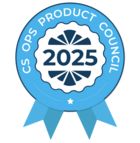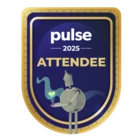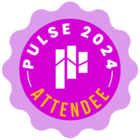Scheduling meetings can be very time consuming; and can often be the reason why customers don’t schedule meetings at all. Reducing the friction between both account management teams (i.e - Customer Success Managers, Account Managers, Solution Architects, etc.) and customers can help significantly with improving the response rate of your requests for a meeting.
One tool to help with this is Calendly. A popular calendar booking service that allows third parties to select a time slot that is convenient for both them and you, without the need for long email chains back and forth. Calendly in particular has some great features such as round-robin scheduling (great for pooled teams) and group bookings (great when you want both a Customer Success Manager and Account Manager to attend).
Once your team has selected a tool such as Calendly, the next challenge is getting your customers to book the time at the right point in their customer journey. This can vary between all sorts of different use cases, but to name a few, here are some examples:
-
Quarterly Business Reviews (QBR)
-
Account Renewals
-
Upsell/Cross Sell opportunities
-
CSM Handovers
-
Re-engaging with customers
The best way to achieve this outcome is to leverage the power of Gainsight CS’s Journey Orchestrator and Gainsight PX. To help get you started, here’s one example of how it can be done.
Scenario
Today, all of your customer success managers manage the day-to-day operations of your customer accounts, including the contract renewal process. You have recently signed up for a service such as Calendly and want to send automated emails to customers 90 days from their contract expiration requesting a call with their customer success manager using their unique calendar booking link.
Step-By-Step Guide
The first challenge is to add unique links to each of your customer success manager profiles in Gainsight CS. To achieve this, we’ll need to use the Data Management feature.
Note: If you do not see these options or do not have access, please reach out to your Gainsight administrator for assistance
-
Using the left-hand navigation, select Administration followed by Customer Data, and then Data Management
-
Locate the User object from the list. (You may need to use the search feature for this) and press the
icon, followed by Edit Objects
-
Press Next at the bottom right to skip the Object Information section and you should now be presented with a list of fields to add/edit
-
Drag and drop the Url data type from the left-hand side to the right, then give the field a name as you see fit
If there are any other fields you wish to add at this point, go ahead and do it now.
-
Once done, press Save and Close at the bottom right of your screen
Now the field is created, we need to populate the fields on our teams user profiles.
Note: If you do not see these options or do not have access, please reach out to your Gainsight administrator for assistance
-
Using the left-hand navigation, select Administration followed by Users and Permissions, and then User Management
-
Locate the user who you wish to edit, press the
icon on the right-hand side of the row, and press Edit User
-
As you scroll down on the users profile, you will now see a Custom Fields section with your newly created field. Go ahead and add the relevant calendar booking URL to this section and hit Update
Repeat this process for all of your customer success managers.
Great work! If you have been following along, you should now have a new custom field added to all of your Gainsight CS customer success managers with it populated accordingly.
The final step is leveraging the new calendar booking link into automated email flows using Journey Orchestrator. A common mistake is to start to create the program before having the email drafted. To avoid this, let’s create the email template first.
Note: If you do not see these options or do not have access, please reach out to your Gainsight administrator for assistance
-
To start, select Journey Orchestrator from your left-hand navigation, followed by Email Templates
-
At the top right-hand side of the screen, press Create and populate the New Template form as you see fit, and then press Create
Note: In the example we provided below, we have set the Template Type as Operational. This should only be used when the recipient can not consider the email spam. Learn more about anti-SPAM laws if you are unsure
-
Create your renewal email by populating the email subject and the body of the email. Don’t be afraid to use images and colors here to make it look in-keeping with your corporate branding
-
Once your email is completed, locate the text which you wish to hyperlink to the calendar booking service. Then, highlight the text and press the
icon at the top
-
Within the popup dialogue, under the Link section, press the
icon to insert a tokenized placeholder
-
Click the Place holder and press Edit when prompted
-
It is recommended at this stage to specify the Display Name and Default Value. For the purposes of our example, we’ll set the default value as an email address (make sure to include the mailto: at the beginning to ensure it is a valid link). This email address be a shared email group/inbox to ensure visibility by as many people as possible
-
Press Update, followed by Submit on the Insert/Edit link dialogue
-
Press Save on your email, followed by the
icon at the top left-hand corner
Now we have our email template created, we can begin the task of creating the automated program.
Note: If you do not see these options or do not have access, please reach out to your Gainsight administrator for assistance
-
Using the left-hand navigation, select Journey Orchestrator, followed by Programs
-
On the top right-hand side of the Programs page, select the Add Program option, followed by Advanced Program (You can use a Simple Program here if you prefer but the instructions will differ)
-
Give your program a name, make sure the Type is set to Company, and the Model is set to Email Chain. Then hit Save
-
The first step of any new journey is to create the Audience. Left-click on the green box with the people icon
-
Add a source by pressing + SOURCE at the top right-hand side, followed by Query Builder
-
Provide a name for the query builder and then press Save
-
From here we want to start by creating a Dataset task. The preferred way to do this is by selecting Task at the top right-hand side, followed by Dataset
Note: Where most of your data is located can differ for each customer, however, we will walk you through how to add the custom field we previously created as a Dataset. If you are unsure how to locate your customer companies and contacts, check out our Education center where we have a great course on getting started with Journey Orchestrator
-
Give your task a name at the top of the page, then at the top left-hand side of the Task editor, make sure that you have Matrix Data selected, followed by User
-
Drag the desired fields across to the Show section of the task editor. The ones we recommend for this will be
1. GSID (Used to link your customer success manager with your customer company profile)
2. First Name
3. Email
4. Your newly created custom field (as shown above)
Tip: Press Preview to get a sneak peek at the results of this task. (Recommended to make sure you select the correct fields)
-
Then press Save followed by the
icon at the top left
-
Complete a similar step to add your customer company and contact data. Make sure to use the Merge task to combine all of your Dataset tasks at the end
Note: Where most of your data is located can differ for each customer. If you are unsure how to locate your customer companies and contacts, check out our Education center where we have a great course on getting started with Journey Orchestrator
-
Once your data is ready, set a schedule by pressing the Schedule option at the top right, followed by Add all the participants in the query builder and ensure to include any participant added in the future
-
Press Save on the schedule dialogue, followed by Back to Sources
-
Next, complete step Two, Filter Criteria on Participants as needed, and then select the third step, Mapping Participant Sources
-
Map the relevant fields for the Standard Field Mapping section, including Recipient Email Address and any other fields you would like
-
Scrolling down the page you will find a Custom Field Mapping section. At the bottom right-hand side, press the Add Custom Field option, followed by String
-
Populate the Display Name and select the mapping to your calendar booking link along with any other custom fields you wish to add, then press Save
-
At the top right-hand side of the screen, press the Back to Model option and select the pencil icon as you hover over the blue Send Email box
-
Select and/or populate the relevant fields at the top of the screen, making sure to select the corresponding email template
-
On your email template, click on the Red token which was specified earlier
-
Hover over the Red Token shown in the dialogue box and press the Map Fields icon shown, selecting the corresponding map field from the list
-
Press Submit on the dialogue window, followed by Save and Back to Model
-
Press the final icon (+) at the end of the journey and select End Outreach
-
Press Save once more and after checking thoroughly you are all set to Publish the journey
Other Considerations
Sending an automated renewal email with a link to book time with your customer success managers is just one example of how this functionality could work. It’s also possible to leverage the Gainsight PX integration to send curated, personalized in-app dialogues via Journey Orchestrator as shown in the examples below:
Journey Orchestrator paired with Gainsight PX can be a power couple for any customer success team hoping to create digital engagements. What other ways could you use these features? Let us know in the comments below.
About the author
My name is Aaron Hatton and I am a Digital Program Manager at Gainsight, helping develop Digital Customer Success strategies to elevate the Gainsight experience for all our customers and products. Follow me for more useful tips and tricks like this in the future.


